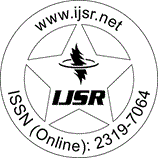Downloads: 146 | Weekly Hits: ⮙1 | Monthly Hits: ⮙1
Research Paper | Dental Science | Indonesia | Volume 6 Issue 12, December 2017
Antibacterial Activity of Betel (Piper betle L.) Leaf Extracts towards Aggregatibacteractinomycetemcomitans and Porphyromonasgingivalis
Nunung Rusminah | Agus Susanto [4]
Abstract: Aggregatibacter actinomycetemcomitans (Aa) and Porphyromonas gingivalis (Pg) are the dominant bacteria in periodontal disease. The purpose of this study was to determine the inhibitory potential of betel leaf extract gel towards Aa and Pg bacteria. Methods This study was an in vitro experimental laboratory. The first stage of the study was the phytochemical eradication of the betel leaf extract. Determination of the minimum inhibitory concentration of the betel leaf extract gel was done by observing the lowest concentration seen clearly for the first time. The antibacterial activity test was performed by using agar diffusion method, to determine the betel leaf extract gel inhibitory zone towards Aa and Pg bacteria. Results Based on the qualitative phytochemical analysis, betel leaf extract contained alkaloids, flavonoids, polyphenols, tannins, monoterpenoids, and sesquiterpenoids. The minimum inhibitory concentration of betel leaf extract gel towards Aa was as much as 12.5 %, whilst towards Pg was as much as 25 %. Inhibitory zone of betel leaf extract gel towards Aa and Pg bacteria was 14.70 mm and 8.95 mm consecutively. Conclusion The betel leaf extract gel was having the ability to inhibit the growth of Aggregatibacter actinomycetemcomitans and Porphyromonas gingivalis.
Keywords: Antibacterial activity, Aggregatibacter actinomycetemcomitans Aa, betel leaf extract, Porphyromonas gingivalis Pg
Edition: Volume 6 Issue 12, December 2017,
Pages: 1245 - 1248
Similar Articles with Keyword 'Antibacterial activity'
Downloads: 43 | Weekly Hits: ⮙1 | Monthly Hits: ⮙1
Research Paper, Dental Science, India, Volume 10 Issue 2, February 2021
Pages: 1263 - 1267Comparative Antimicrobial Efficacy of Chrysopogon Zizanioides and Matricaria Chamomilla along with 5.25% Sodium Hypochlorite and 2% Chlorhexidine against Enterocococcus Faecalis: An In-Vitro Study
Dr. Shashin Shah | Dr. Nidhi Ruparelia | Dr. Vaibhavi Solanki | Dr. Bansri Patel
Downloads: 119
Research Paper, Dental Science, Iraq, Volume 7 Issue 3, March 2018
Pages: 1821 - 1825Evaluation of Antibacterial Activity of Adhesive Systems Reinforced by Fluoroapatite or Calcium Fluoride (In Vitro Study)
Mohammed Kassim Gholam [2] | Mohammed R. Hameed [2]
